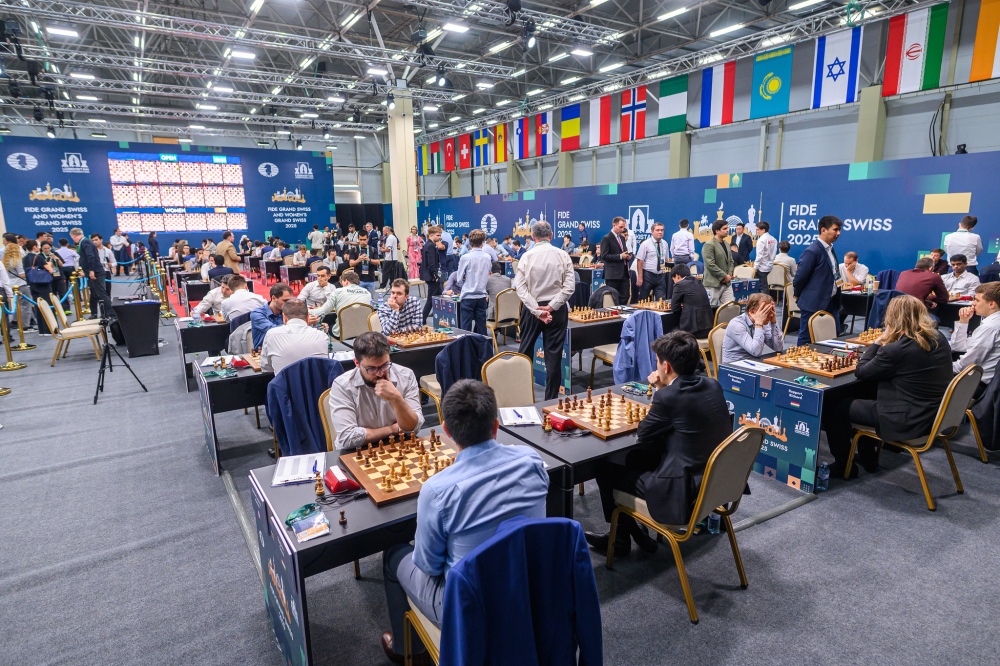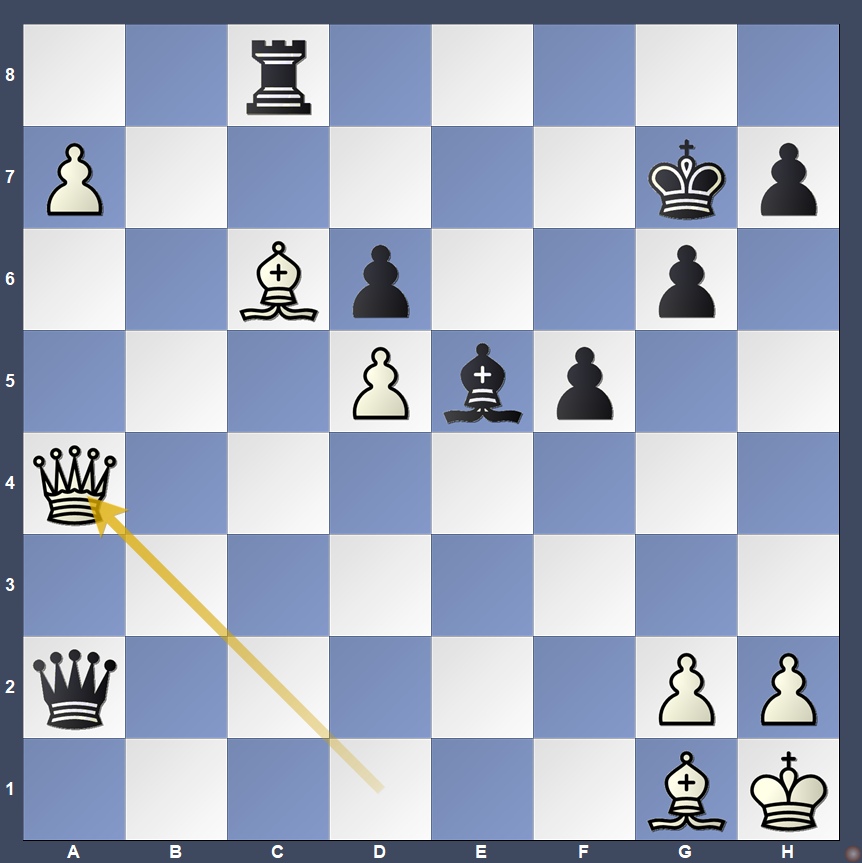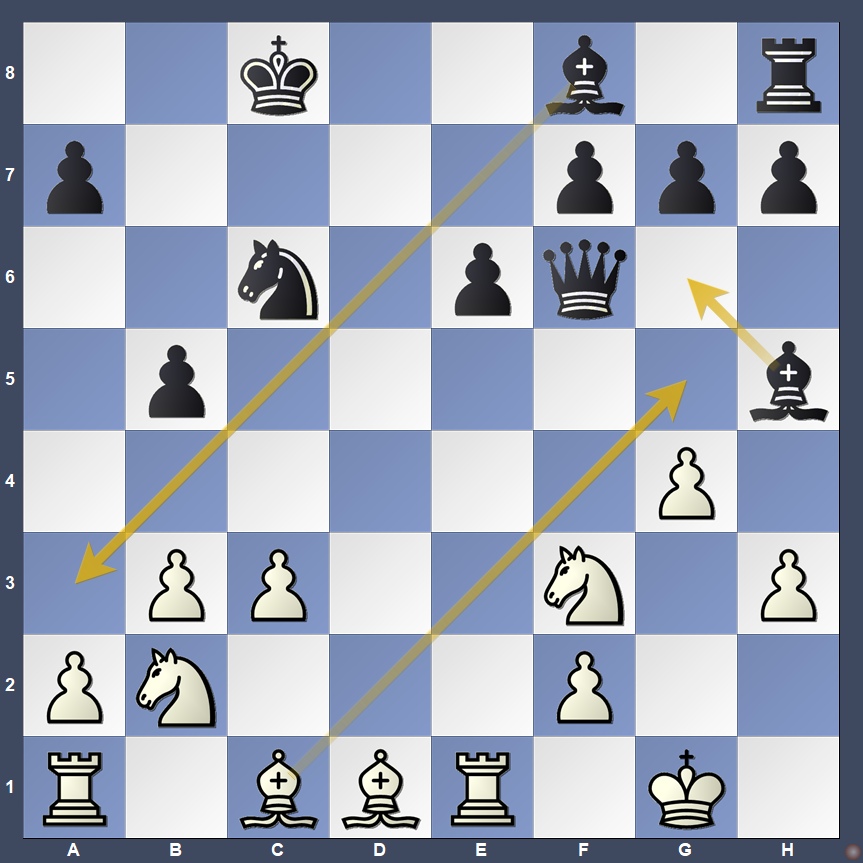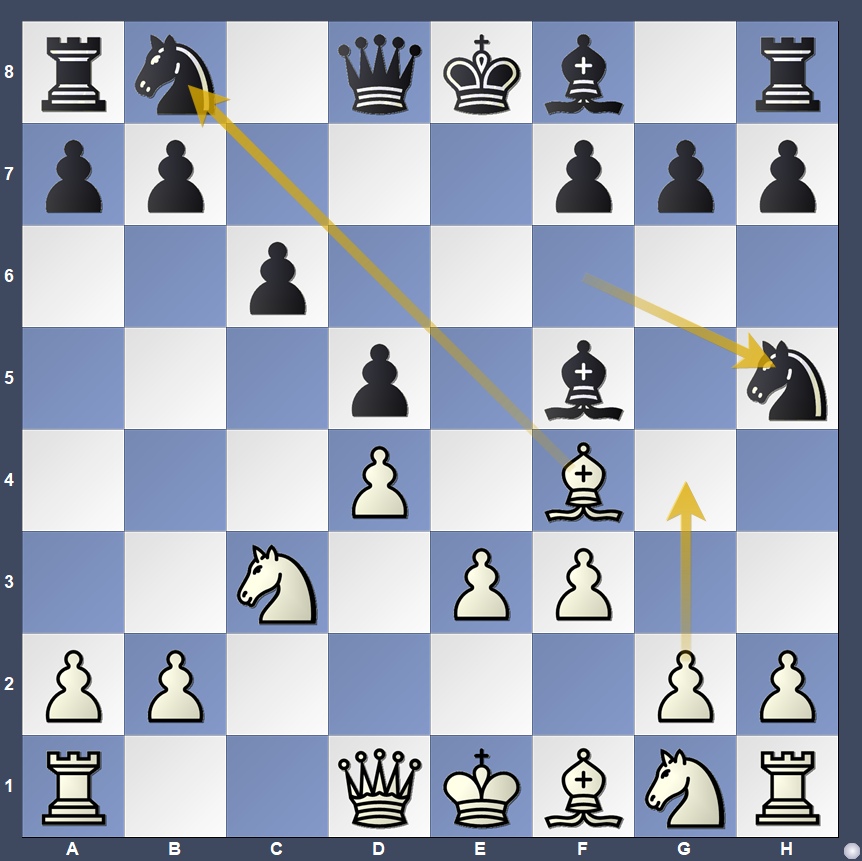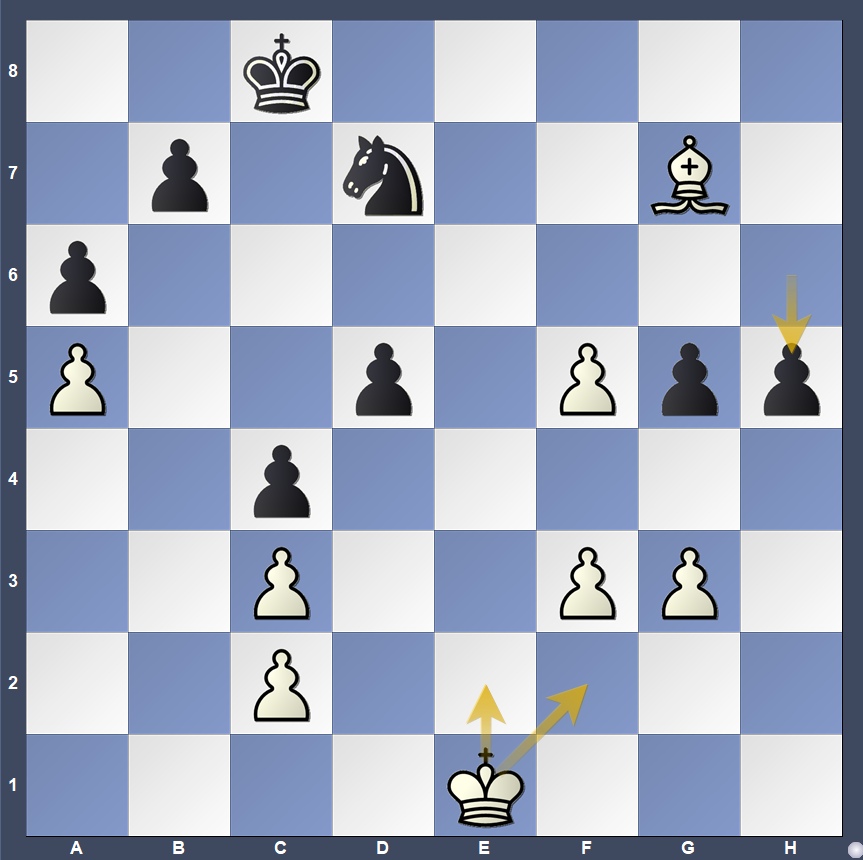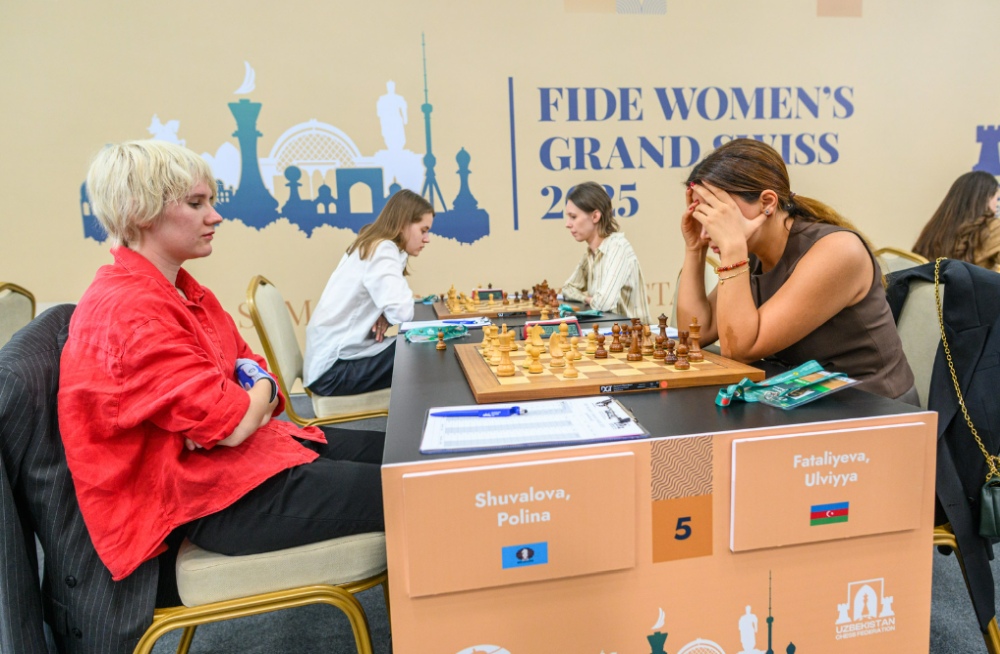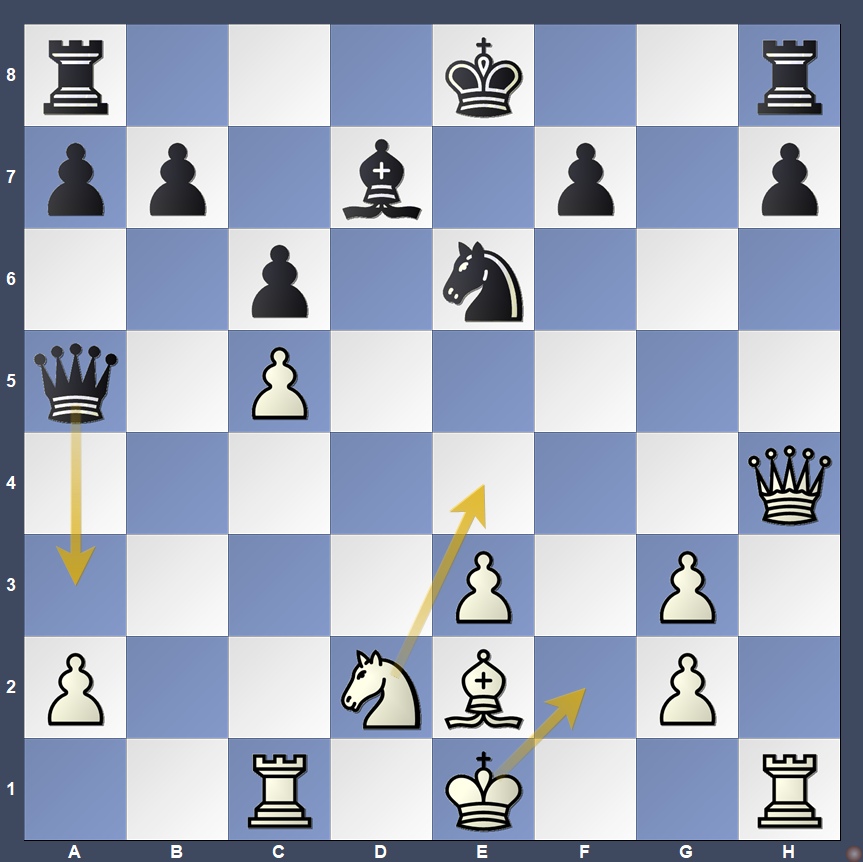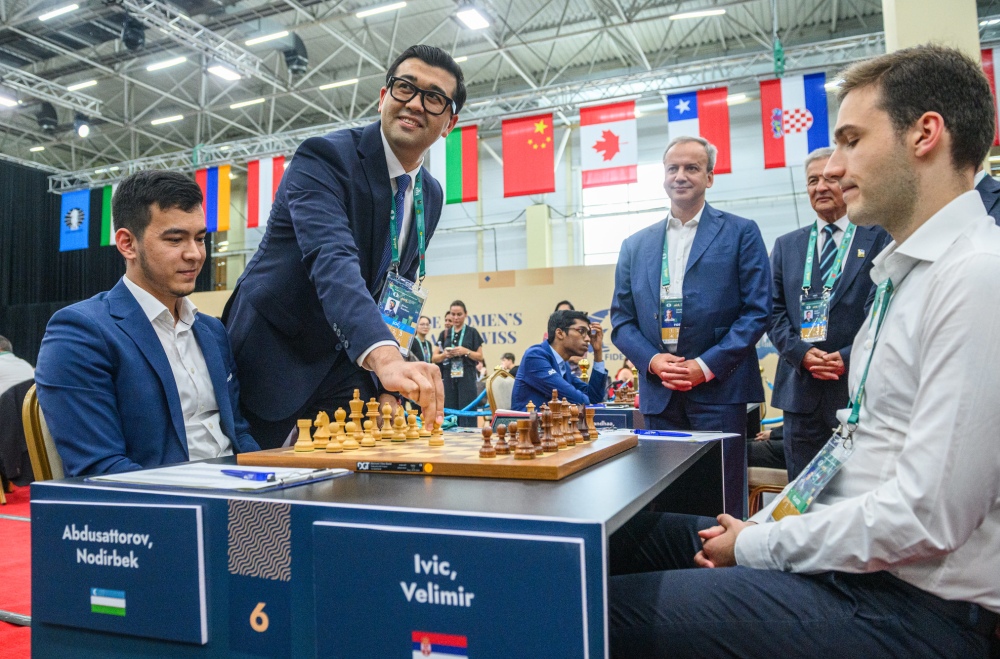
Round one of the 2025 FIDE Grand Swiss ended with a high number of draws in the Open section. By contrast, the Women’s Grand Swiss delivered early drama as several top seeds were upset by lower-rated opponents.
The first games of the 2025 FIDE Grand Swiss started at 3 PM local time in Samarkand. Now in its fourth edition, the event has drawn many of the world’s strongest players – including the world champion, Gukesh D – to compete in what is widely seen as the most gruelling Swiss System tournament of the year.
The round began with the traditional ceremonial first move on the top boards. Alisher Sadullaev – the First Vice-President of Uzbekistan Chess Federation and CEO of the Youth Affairs Agency of Uzbekistan – made the ceremonial move on board six, featuring Uzbekistan’s Nodirbek Abdusattorov. Sadullaev was joined by FIDE President Arkady Dvorkovich and Chief Arbiter of the event, Laurent Freyd.
The opening rounds of Swiss System tournaments, especially round one, usually feature a significant number of victories, as the strongest players are pitted against the lower-rated ones. But the Grand Swiss is different: there are no weak opponents and anyone can win – and lose. It is not surprising then that the majority of the games in the Open event ended in draws.
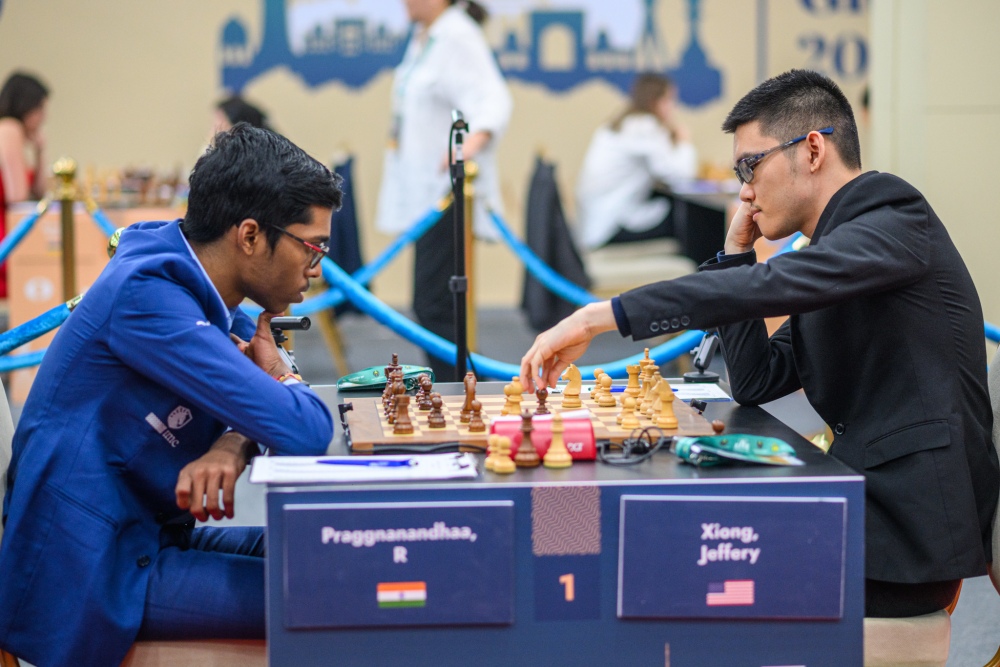
On board one, top-ranked player R Praggnanandhaa drew with Jeffery Xiong in the Exchange line of the French. “Getting Jeffrey [former World Junior Champion] is unlucky, but everyone is strong here, and you don’t really have easy games,” said Praggnanandhaa after the game. The 19-year-old Indian shrugged off suggestions that he felt any pressure as the top-rated player in the tournament.
On board two, Arjun Erigaisi drew with Maksim Chigaev, while rising stars Ediz Gurel and Vincent Keymer split a point in the Ruy Lopez. GM Gabriel Sargissian – a highly successful member of the Armenian chess team – had a winning position against none other than Hans Niemann, but let the advantage slip into a draw.
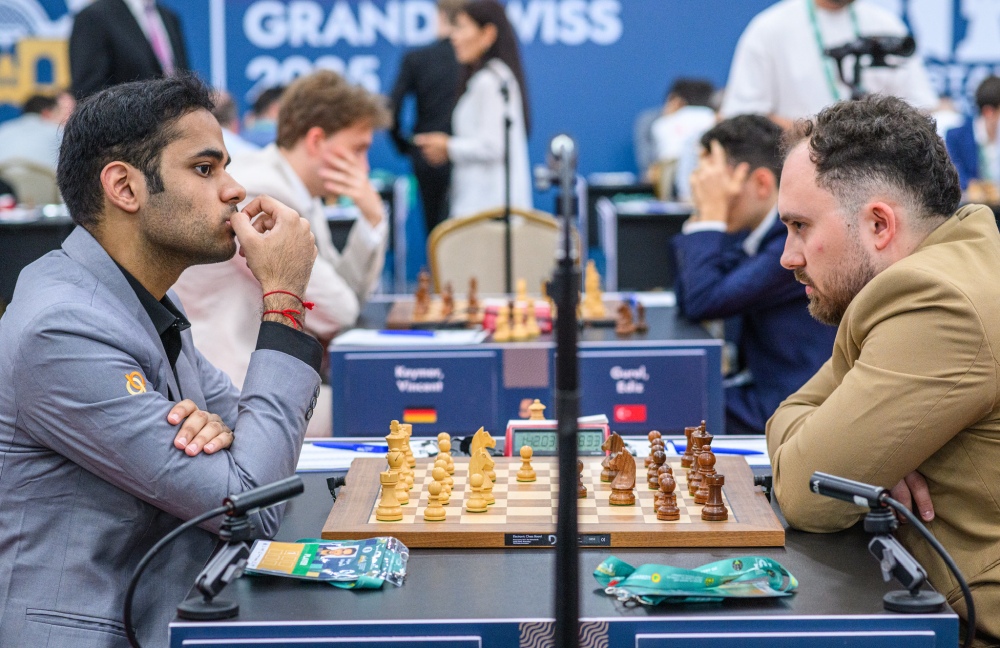
Among the notable winners in round one are the World Champion Gukesh D who overcame the seasoned French GM Étienne Bacrot on the black side of the Caro-Kann. Anish Giri defeated Armenia’s Robert Hovhannisyan in the Najdorf line of the Sicilian.
The winner of the 2023 Grand Swiss, Vidit Santosh Gujrathi, also started with a victory against Alexander Donchenko, following time trouble. Alireza Firouzja managed to score against Bassem Amin after the Egyptian GM made a crucial mistake in an equal endgame late in the round.
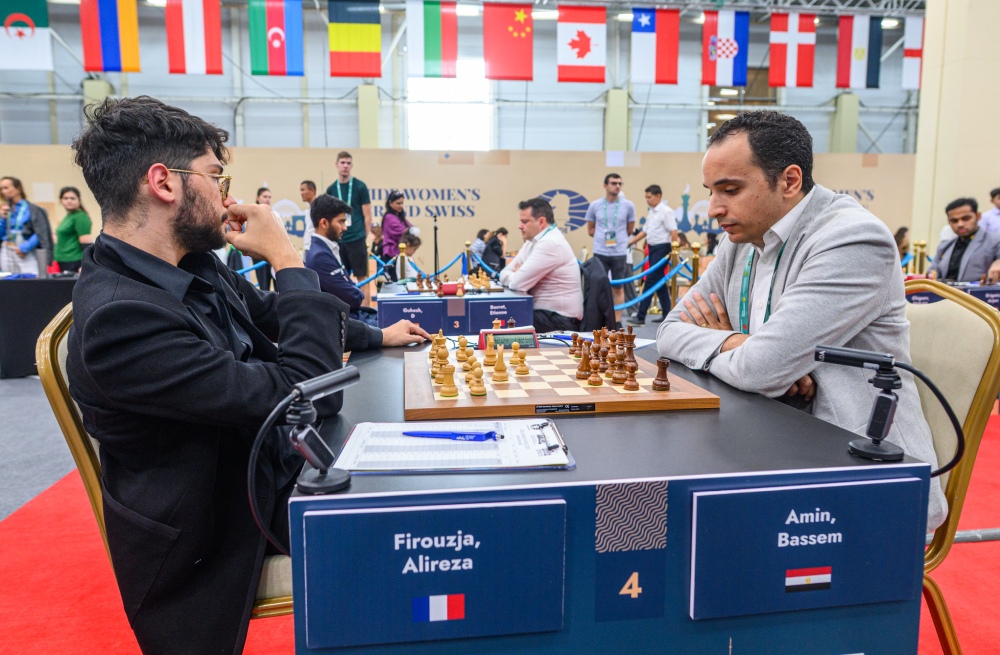
Uzbekistan’s biggest hope in this tournament, Nodirbek Abdusattorov, defeated Serbia’s Velimir Ivic. In the Najdorf, Abdusattorov created a passer on the a-file and gradually increased pressure on Black. The opponents traded mistakes in time trouble before the time control, but Velimir was last to err.
White is winning here as his a-pawn is unstoppable.
39…Qxa4 40.Bxa4 Rc1 A desperate attempt by Ivic. 41.a8=Q Bd4 42.h4 Rxg1 43.Kh2 Ra1 44.Qe8 and after a few more checks, Black had no more choices but to resign.
The first player to score victory in the 2025 Grand Swiss was Aydin Suleymanli from Azerbaijan. The 2609-rated Grandmaster prepared an opening surprise for Indian GM Murali Karthikeyan that included a queen sacrifice.
A first look at the position would suggest nothing unusual after the natural 15.Nce5, but here White opted for 15.Nb2 inviting the obvious move 15…Nxc3 – the white queen is trapped and there is no other option but to sacrifice it. After 16.dxc3 Rxd1 17.Bxd1 White is a queen down, but this unbalanced position is evaluated as equal, given Black’s lag in development.
17…e6 18.g4
And now, the only move for Black was to play 18…Ba3 – giving up the white-squared bishop in exchange for activating his pieces. Instead, Black played the logical move 18…Bg6? and after 19.Bg5 Qxc3 20.Rc1 his king is dangerously exposed.
20…Qxb2 21.Rc6+ Kb7 22.Ne5 White is completely dominating the position and the only way for Black to continue the game was to hand back the queen sacrifice: 22…Qxe5 23.Rxe5 Kxc6 24.Bf3+. Although a pawn down, White’s pieces have all the space while Black is struggling.
Eventually, Black had to give up another piece but could not escape defeat.

The game between the winner of this year’s Women’s World Cup Divya Deshmukh and her Indian compatriot Puranik Abhimanyu brought the first real spark in the tournament. Early in the game, in the exchange line of the Queen’s Gambit, the two played a rare continuation which initially seemed like a blunder:
Black has just played 7… Nh5 but after 8.Bxb8 Rxb8 9.g4 he seems to lose a piece. However, after 9…Qh4+ 10.Kd2 Ng3 11.gxf4 Nxh1 12.Nh3 Bd6 13.Bg2 0-0 14.Qh1 Puranik got sufficient compensation through pressure on the centre.
Divya went on to create a strong position and dominate, but misplayed in time trouble and ended up losing.
The other woman playing in the Open, Alexandra Goryachkina, lost as Black to Turkish prodigy, GM Erdogmus.
The Women’s Grand Swiss
The women’s event saw a completely different start, with upsets across the top boards.
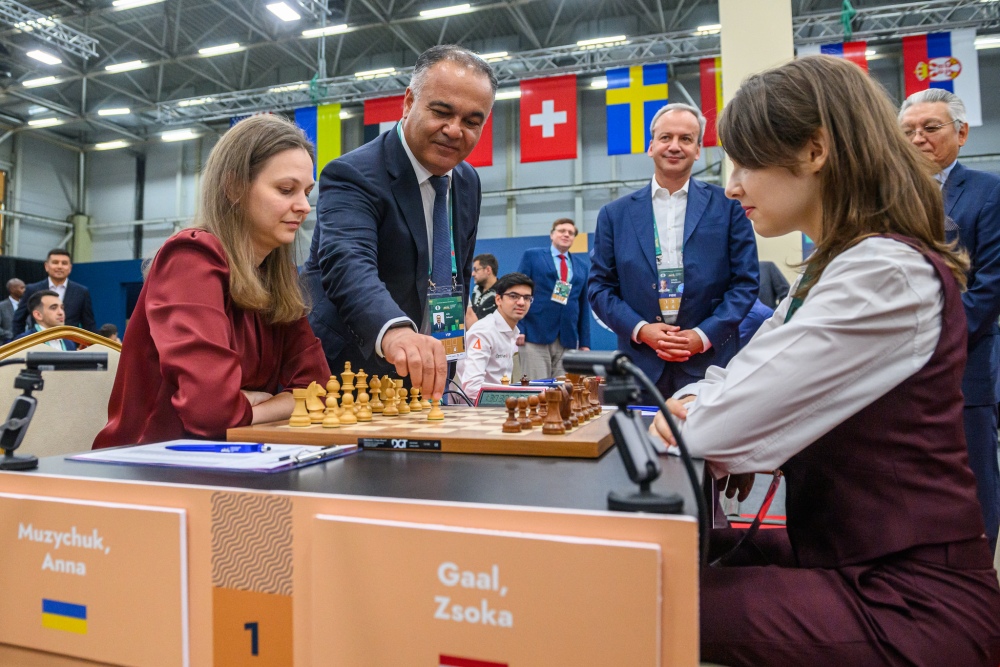
On board one, top seed Anna Muzychuk lost on time to 18-year-old Hungarian WGM Zsóka Gaál – despite holding a clearly better position deep into the game.
White is winning after either 36.Ke2 or 36.Kf2, but at this point, she ran out of time. A very unlucky start for Anna, who came to Samarkand with the goal of securing one of the two top spots leading to the 2026 Candidates.
European champion Teodora Injac was stunned by Olga Badelka, who took over the initiative in the middlegame and played confidently until the end.
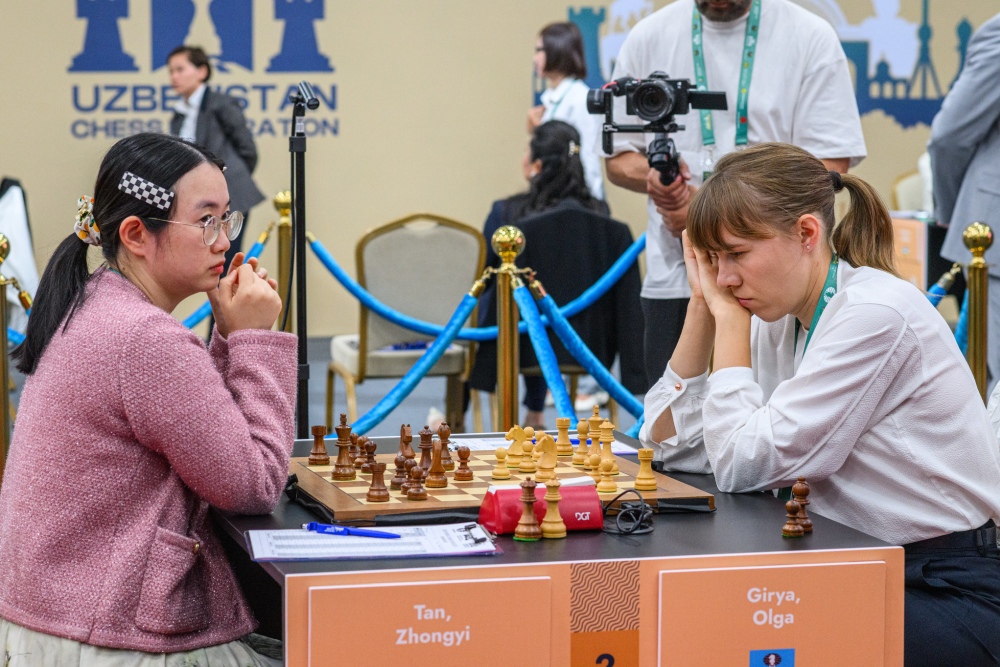
Former world champions also had a poor start. On board two, Tan lost to Olga Girya. In the Queen’s Gambit Declined, Tan created a strong position, making an advance on the queenside. However, towards the end, she miscalculated, lost a pawn and ultimately conceded her defeat.
Another former world champion, Mariya Muzychuk, also lost – misplaying an endgame as Black against lower-rated Xeniya Balabayeva.
In another upset, IM Polina Shuvalova lost as White to 100 points lower-rated Azerbaijani player Ulviyya Fataliyeva.
There was another surprise earlier in the day when Chinese Woman GM Zhai Mo – the Women’s Chinese Chess Champion in 2018 – was the first to win a full point. She completely outplayed the nearly 100-points-higher-rated Leya Garifullina, forcing her to resign or get checkmated.
19…Qa3? Black is oblivious to White’s threats over the dark squares. Much better was 19…Rg8! and there is no White’s forced win in sight.
20.Kf2! Protecting the e3-pawn and preparing Nd2-e4. 20…h6 21.Ne4 Qb2 22.Rad1 Bd8 – now Black is in a mating net which she cannot escape.
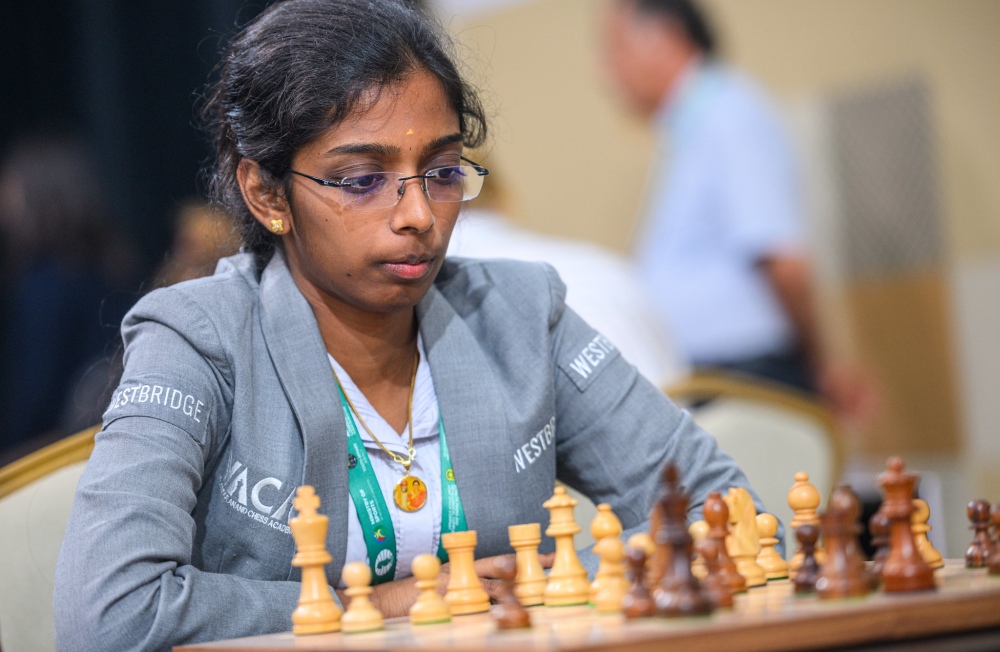
On the other hand, the 2023 winner Vaishali Rameshbabu started with a victory, making a good start on her goal to qualify for the Candidates. Among the top boards, Bibisara Assaubayeva defeated Estonia’s Mai Narva with the white pieces. Nurgyul Salimova split a point with Kateryna Lagno on board four.
The full results of Round 1 and Round 2 pairings can be found here:
Women – grandswiss2025.fide.com/grand-swiss-women/
Open – grandswiss2025.fide.com/open/
Round 2 starts at 3 PM local time on Friday, 5th September.
Written by Milan Dinic
Photos: Michal Walusza
Official website: grandswiss2025.fide.com
About the event
The FIDE Grand Swiss is one of the most significant tournaments in the World Chess Championship cycle, featuring many of the world’s strongest chess players. Launched in 2019 (with the women’s event starting in 2021), the 11-round Swiss system tournament is held every two years. Considered as one of the most difficult and unpredictable chess events given its open nature, the top two finishers in both categories qualify directly for the World Candidates tournament, where a challenger for the title of world champion is chosen.
The 2025 edition runs from 4th to 15th September at the EXPO Centre in Samarkand, Uzbekistan. There are 116 players taking part in the Open and 56 players in the Women’s competition. The total prize fund for the event is $855,000 – $625,000 for the Open and $230,000 for the Women’s event.
All the rounds will be broadcast live on FIDE’s official YouTube channel.


